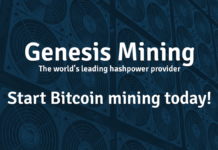As cryptocurrencies like Ethereum mature and become more mainstream in the investment arena, it is important to understand the meaning of “hard fork” and “split.”
That knowledge is especially timely, given that Ethereum is expected to go through a hard fork on October 17.
Earlier this year, we saw Bitcoin split and form Bitcoin Cash which was huge news and a historical event in cryptocurrency world.
Now without confusing you too much, in the case of Ethereum, it’s important to note: not all hard forks lead to splits, but all splits happen by hard forks.
The hard fork expected with Ethereum later this fall is not contentious and is not expected to lead to a split, according experts.
New cryptocurrencies usually occur when there’s a signal for a new hard fork but there’s no consensus — so a significant enough portion of nodes and miners continue to mine the old chain, thereby introducing a situation with two currencies. For example with Ethereum, we have Ethereum (ETH) and Ethereum Classic (ETC).
According to a source, the debate with the latest Ethereum fork is not really significant enough to say with 100% confidence that a new cryptocurrency will come from this, but for now, it’s looming in the background.
When does a hard fork occur? A hard fork is a protocol change that requires all users to upgrade, because it is not backwards compatible, meaning older iterations would not work as the blockchain advances. So if the protocol change is backwards compatible, it can be implemented as a soft fork. When it comes to most major Ethereal upgrades, they are done as hard forks, but none has resulted in a network split surviving any significant length of time.

What is a split? A split on the other hand is a subset of hard forks that happens when some network participants fail to install the protocol changes and continue running the unchanged software. There can be several reasons for this. But in a case when not everyone agrees with the changes, it leads to a contentious hard fork..
A hard fork is a change in network consensus rules, says Cyrus Younessi is the Digital Currencies Investment Analyst at Cumberland Mining in Chicago. Sometimes those changes are desirable, sometimes not, he says.
“When they are unambiguously desirable, say, for maintenance upgrades or features that benefit user experience, the entire community steps forward together,” Younessi says. “The old chain exists, but no one cares to be on it. This is a successful protocol upgrade hard fork. This is what Ethereum is about to undergo.”
Beware! Contentious Hard Forks Are Bad
“Contentious hard forks are obviously very, very bad,” Younessi says. “That’s what led to ETH/ETC, or Bitcoin/Bitcoin Cash. The community did not agree on the hard fork upgrade path.”
In the instance of the Bitcoin fork this past summer, users and miners remained on both chains. Bitcoin might have another contentious hard fork in two months, because not everyone agrees that an increase in the block size to 2 MB is desirable and beneficial.
“Ethereum has had three successful protocol upgrade hard forks thus far, in addition to the contentious one that led to ETC,” explains Younessi.
Will there always be a few stray detractors, even in non-contentious forks?
“Sure — that’s part of the game,” Younessi adds “But it’s generally easy to see in advance which hard forks are non-contentious and which are contentious. Branding this upcoming Ethereum hard fork as contentious is misguided. As users, we have been anticipating these features for years now.”
Are you investing in cryptocurrency? Don’t miss TheStreet’s coverage:
- Should You Add Bitcoin to Your IRA?
- Why Bitcoin Cash Prices Are Likely to Dive Again
- Bitcoin Will Soar to $5,000 Barring a Major Catastrophe
- Bitcoin Futures-Based ETF Likely to Be Approved in the U.S.
- Forget IPOs: How Do Companies Know If an ICO Is Right for Them?
- Bitcoin to Take Over Civilization
- Bitcoin Mania Setting Up for Greatest Financial Crash in 400 Years
- Bitcoin Investors Must Report Gains to the IRS
- Ethereum Expected to Split Again in October
Our Social Networks: Facebook Instagram Pinterest Reddit Telegram Twitter Youtube







